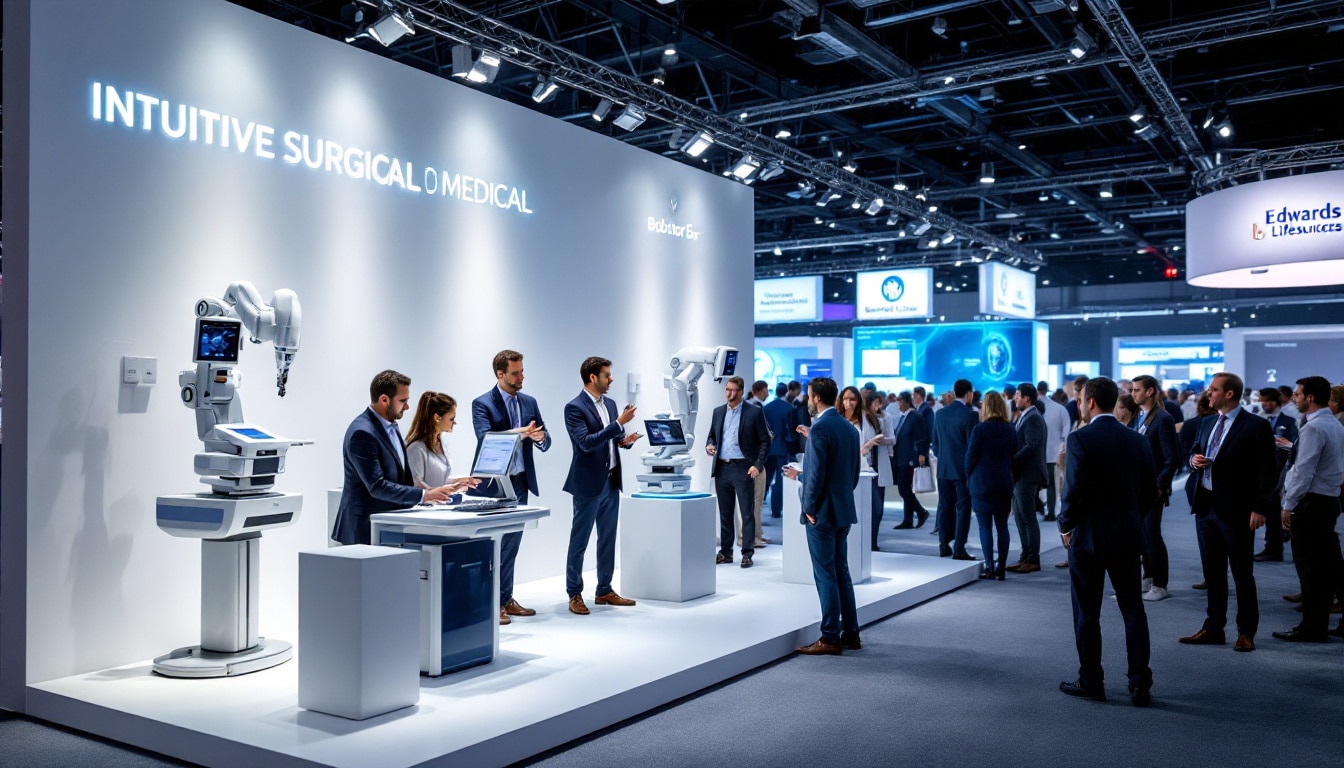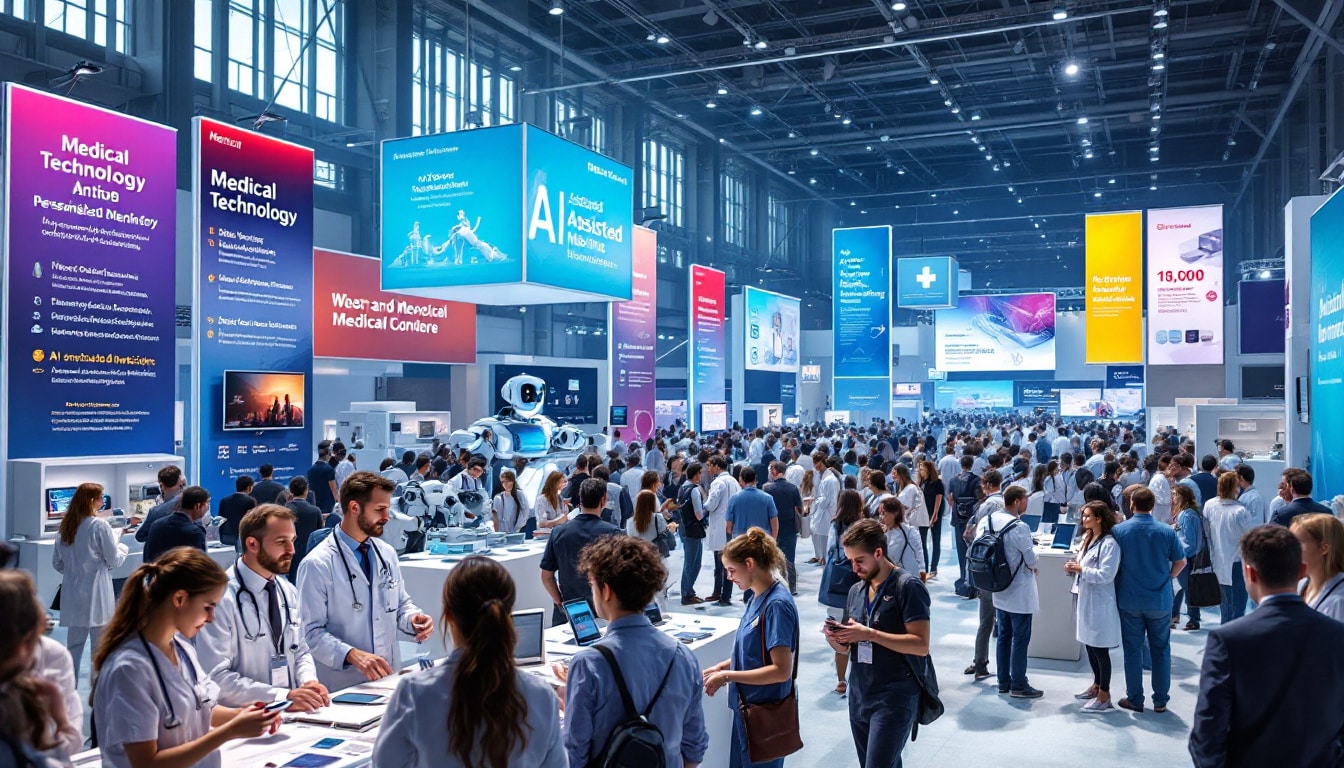Week two of the earnings season for medical technology companies unfolds with crucial announcements.
Boston Scientific, Edwards Lifesciences, and Intuitive Surgical
are at the heart of investor discussions.
These reports will shed light on the performance of major markets such as pulsed field ablation (PFA), transcatheter aortic valve replacement (TAVR), and surgical robotics during the first three months of the year. The impact of tariffs continues to influence financial forecasts, particularly for Intuitive Surgical, which manufactures a large share of its instruments in Mexico. Boston Scientific anticipates some setbacks related to tariffs but remains robust in its operations. Edwards Lifesciences emphasizes the growth of its TAVR technologies and the planned expansion of its labels mid-year.

Introduction to the upcoming players to watch in medical technologies
The medical technology sector is preparing for a crucial week with the release of first quarter results by three industry giants: Intuitive Surgical, Boston Scientific, and Edwards Lifesciences. These financial reports will provide valuable insights into the performance of key markets such as pulsed field ablation (PFA), transcatheter aortic valve replacement (TAVR), and surgical robotics during the first three months of the year.
What are the expectations for Intuitive Surgical’s results?
Intuitive Surgical is one of the global leaders in surgical robotics, primarily known for its da Vinci system. Ahead of the release of its quarterly results, analysts at J.P. Morgan highlighted the potential impact of tariffs on the company. With about 90% of its instruments and accessories manufactured in Mexico, Intuitive Surgical has so far avoided the worst-case scenarios thanks to the United States-Mexico-Canada Agreement (USMCA), which excludes reciprocal tariffs on compliant goods.
However, since April 2, a tax of approximately 25% applies to products that do not comply with the USMCA. Analysts expect the company to clarify during the earnings call what percentage of its products made in Mexico meet these criteria. Intuitive Surgical has already shifted some of its production to the United States, and it is possible that this trend will accelerate to mitigate the impact of tariffs.
Moreover, the growth outlook for the company remains optimistic. Analysts expect an increase in growth guidance for procedures and believe that sales of the latest da Vinci 5 robots will remain strong. For more information on tariff movements in the sector, see medtech-rebondissent-apres-que-trump-mette-la-plupart-des-tarifs-en-pause/”>pharmaceutical and medtech sector stocks rebound after Trump paused most tariffs.
How is Boston Scientific positioned against tariff challenges?
Boston Scientific has indicated that its forecasts incorporate “some minor headwinds due to potential taxes.” According to analysts at BTIG, the company has no significant levels of manufacturing or sourcing from Mexico, Canada, or China, which partly shields it from current tariffs. This advantageous position could allow Boston Scientific to navigate more easily in an uncertain tariff environment.
The publication of results next Wednesday will provide further details on the company’s performance, particularly in the PFA segment, a key growth driver. Analysts at Needham recently upgraded their rating on Boston Scientific to “buy,” believing that competitive threats in the PFA field are less severe than expected. This confidence is partly based on a survey showing a marked preference among electrophysiologists for Boston Scientific‘s Farapulse over Medtronic’s Pulseselect.
Additionally, competition from Johnson & Johnson, a third entrant in the PFA market, has been hampered by safety concerns, resulting in a 2% decline in electrophysiology sales in the first quarter. To delve deeper into the dynamics of mergers and acquisitions in the sector, see mergers and acquisitions as well as spin-off operations dominate the last earnings season.
What are the challenges and opportunities for Edwards Lifesciences this quarter?
Edwards Lifesciences stands out with a diversified manufacturing presence, with facilities in the United States, Singapore, Costa Rica, and Ireland. Before Wednesday’s earnings release, analysts at BTIG projected a 3% growth in TAVR sales. However, it is the transcatheter mitral and tricuspid technologies (TMTT) segment that is showing faster growth, with an estimated revenue increase of 57%. Despite this strong growth, the TMTT segment remains significantly smaller compared to the TAVR franchise.
The planned mid-year label expansion for TAVR is identified as a major catalyst for accelerated growth. Analysts anticipate an increase in TMTT sales in the third quarter, making the second half of the year a key period for Edwards Lifesciences in 2025. However, BTIG analysts believe the current strong performances leave little room for substantial increases in the first quarter, given that TAVR growth is expected to remain moderate and TMTT is still in its early stages.
For a deeper analysis of interpretation challenges in interventional neurology, see the challenges of interpreting results in interventional neurology.
How do tariff policies influence the medical technology sector?
Tariff policies play a crucial role in the dynamics of the medical technology sector. The introduction of tariffs on imported products directly influences production costs and, consequently, the profit margins of companies like Intuitive Surgical, Boston Scientific, and Edwards Lifesciences. The recent decision to impose a tax of approximately 25% on non-compliant goods under the USMCA highlights the complexity of global supply chains.
These tariffs may prompt companies to reconsider their manufacturing and sourcing strategies, such as relocating production to domestic sites. For example, Intuitive Surgical might increase manufacturing in the United States to reduce the impact of tariffs, while Boston Scientific already appears well-positioned due to its low dependence on countries affected by tariffs.
Tariff discussions are not limited to immediate impacts. They also have the potential to define trends and competitive dynamics in key markets. Furthermore, legislative measures like the bipartisan health technology investment law aim to stimulate innovation and improve patient access to medical devices equipped with artificial intelligence, thus offering additional opportunities for companies in the sector.
What trends are emerging from recent financial operations in the medtech sector?
The latest earnings season in the medical technology sector has been marked by intense activity in mergers and acquisitions as well as spin-off operations. These strategic moves are often motivated by the need for consolidation to strengthen market positions or to divest from less profitable segments.
For instance, Intuitive Surgical may explore acquisitions to diversify its product portfolio and strengthen its surgical robotics capabilities. Similarly, Boston Scientific may focus on strategic partnerships to develop new technologies in the PFA field. For a detailed perspective on the impact of mergers and acquisitions in the sector, refer to mergers and acquisitions as well as spin-off operations dominate the last earnings season.
In addition, Edwards Lifesciences continues to focus on expanding its TAVR and TMTT technologies, anticipating growing demand due to the rise in less invasive cardiac procedures. Investment initiatives in research and development are essential to maintain a technological edge in a highly competitive market.
What specific challenges do medtech companies face in interpreting financial results?
Interpreting financial results in the medical technology sector presents unique challenges, particularly due to the complexity of the products and services offered, as well as the strict regulations governing this sector. Companies like Intuitive Surgical, Boston Scientific, and Edwards Lifesciences must navigate investments in R&D, fluctuations in raw material costs, and variations in international tariff policies.
Another major challenge lies in accurately evaluating the performance of new technologies. For example, innovations in surgical robotics or TAVR devices require in-depth analyses to understand market adoption, clinical effectiveness, and long-term profitability. Additionally, analyst and investor expectations can significantly influence stock movements for these companies, further complicating the interpretation of financial results.
For an in-depth analysis of the challenges related to interpreting results in interventional neurology, refer to the challenges of interpreting results in interventional neurology.
What impact could the performance of these companies have on the global medical technology market?
The financial performance of Intuitive Surgical, Boston Scientific, and Edwards Lifesciences is a key indicator of the overall health of the medical technology sector. Strong results from these companies can boost investor confidence, attract new capital, and encourage ongoing innovation. Conversely, disappointing results could signal broader challenges, such as market saturation, increased competitive pressures, or regulatory hurdles.
An optimistic financial analyst for Intuitive Surgical sees a potential increase in sales of the latest da Vinci 5 robot, which could reinforce the company’s dominant position in surgical robotics. For Boston Scientific, strong performance in the PFA segment could solidify its reputation as an innovative leader, while Edwards Lifesciences may strengthen its position in cardiac technologies through advancements in TAVR and TMTT.
These dynamics influence not only individual stocks but also sector trends, affecting future investments, strategic partnerships, and research and development directions. For the latest financial results of medtech holdings for the year 2024, see AJJ Medtech Holdings results for the year 2024.













